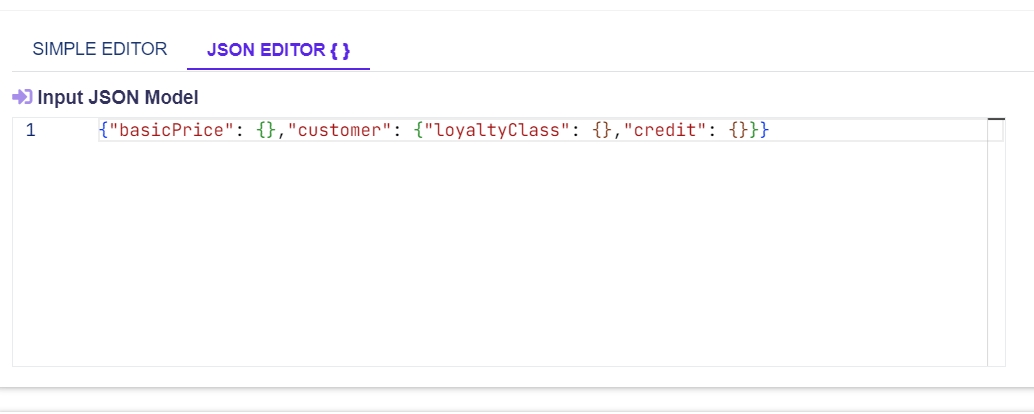JSON Editor
This editor is designed for experienced users familiar with the structure of JSON objects.
Working with the JSON Editor

After making any changes to the input/output model, be sure to save them by clicking the Save button in the bottom-right corner. Please note that all changes apply only to the current version of the rule.
Creating a Model
The model follows a tree structure written in JSON format. Root objects can contain children, but only leaf objects (objects without children) can be selected as variables.
To create a leaf object, use the following format:
Object with empty {}:
"objectName": {}Arrays and values are not allowed.
Example of a Simple Model with Leaves Only:
{
"distance": {},
"tariff": {},
"weight": {},
"longestSide": {}
}Example of a Complex Model:
{
"delivery": {
"distance": {
"car": {},
"ship": {},
"plane": {}
},
"tariff": {}
},
"package": {
"weight": {},
"longestSide": {}
}
}Beautify Code
To beautify the code for better readability, right-click the JSON model and choose the Format Document option.
